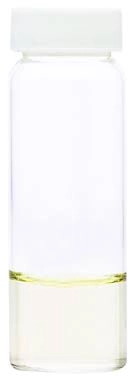Content :
◉ Overview
Alkaline peptone water (APW) is a widely used enrichment medium designed to promote the growth and multiplication of Vibrio cholerae, V. parahaemolyticus, V. vulnificus, and other Vibrio spp. before selective enrichment and isolation on media such as TCBS agar.
The medium’s alkaline pH, ranging from 8.6 to 9.0, creates an environment favorable for Vibrio species while inhibiting the growth of fecal coliforms and other commensal microorganisms. This makes APW an essential tool in clinical microbiology for the detection and identification of Vibrio spp.

Alkaline peptone water
◉ Preparation and Composition
Steps for Preparation
- Weigh 40 g of the following ingredients:
- Dissolve the ingredients in 1 liter of distilled water.
- Peptone: 20 g
- Sodium chloride (NaCl): 20 g
- Mix thoroughly until the solution is homogeneous.
- Distribute the medium into final containers (e.g., test tubes or flasks).
- Sterilize the solution by autoclaving at 121°C for 15 minutes.
- Allow the medium to cool before use.
Composition of APW
Composition alkaline peptone water |
|||
|---|---|---|---|
| Ingredients | Gram/ liter | ||
| Peptone | 20g | ||
| Sodium Chloride | 20g | ||
| Final pH (at 25°C) | 8.4±0.2 | ||
Note: Ensure accurate pH adjustment before sterilization if necessary, to maintain optimal conditions for Vibrio enrichment.
◉ Principle
The alkalinity of APW, with a pH range of 8.6 to 9.0, supports the proliferation of Vibrio species by creating a selective environment. Peptone in the medium provides essential nutrients such as vitamins, minerals, amino acids, and nitrogen, which are crucial for bacterial growth. Sodium chloride ensures osmotic balance, mimicking the natural environment of halophilic Vibrio species
◉ Application
Clinical specimens, particularly those containing low numbers of Vibrio, should first be inoculated into APW as an enrichment step. This increases the likelihood of detecting the pathogen when streaked onto a selective medium like TCBS agar.
For biochemical identification, it is recommended to work with a pure culture obtained from selective media.
◉ Growth Indication
Growth in APW tubes is indicated by turbidity when compared to an uninoculated control tube. This turbidity signals successful enrichment, allowing subsequent isolation and identification procedures.
◉ Conclusion
Alkaline peptone water is a vital tool in clinical microbiology for the enrichment of Vibrio species. Its simple preparation, selective properties, and effectiveness in enhancing pathogen recovery make it indispensable for diagnostic laboratories. When used correctly, APW significantly improves the accuracy of Vibrio detection and identification.